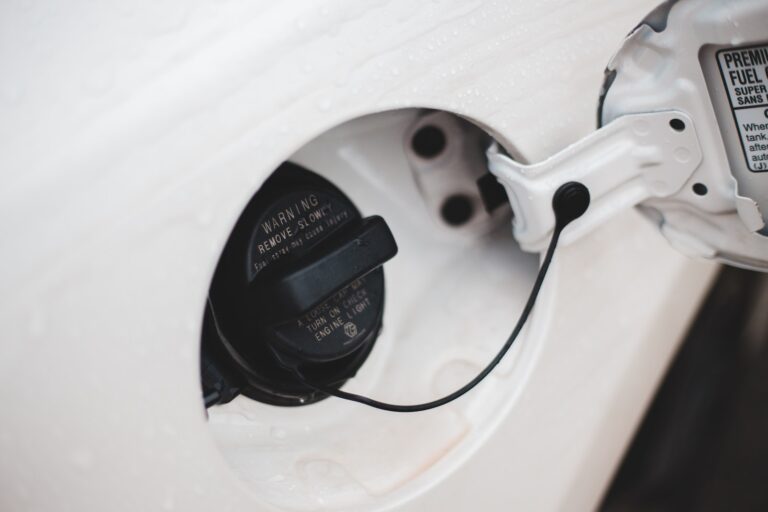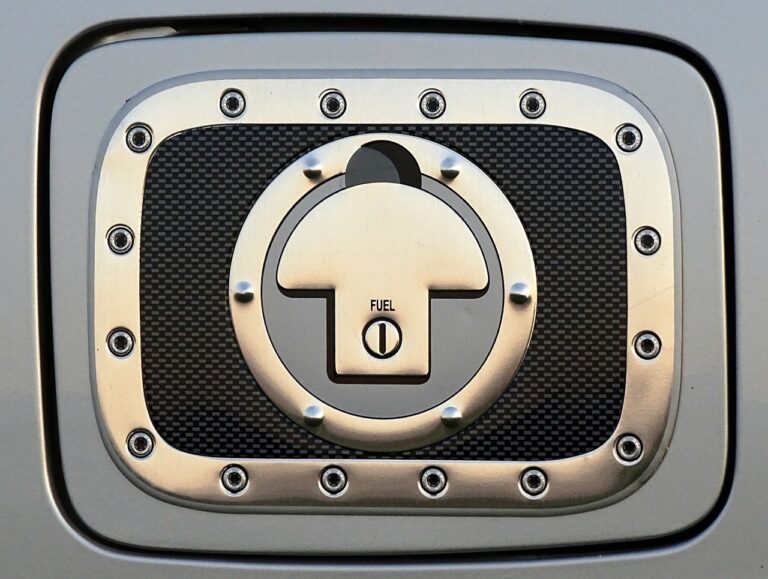Do Gas Tanks Have Drain Plugs?
I used to wonder how one would get gasoline out of the tank. I knew that gas in the tank gets spent as one drive until the tank is empty. But what would one do if one wanted to empty the tank without driving? By use of drain plugs!

A drain plug is a plug at the bottom of gas tanks that allows gasoline to drain out of the tank. Cars with drain plugs will have one or more drain plugs. This is a useful feature in cars when one wants to empty the gas tank due to various reasons.
Key Takeaways
- Drain plugs in gas tanks were commonly found in cars made in the 1990s and earlier, but modern cars generally do not come with drain plugs.
- The shift away from drain plugs in modern cars can be attributed to concerns about fuel theft, fuel leakage, safety, and environmental regulations.
- Drain plugs, when present, are typically located at the bottom of the gas tank and resemble bolts that can be opened with a socket wrench or spanner.
- High-end cars like Lamborghini Huracan and Bugatti Veyron often have multiple drain plugs strategically placed for efficient draining and maintenance, showcasing their advanced fuel systems.
The Need for Drain Plugs in Gas Tanks
You may wonder why gas tanks need drain plugs. Below are a few reasons why gas tanks need drain plugs
- Preventing Fuel Spoilage during Long-Term Storage: Drain plugs are used to empty the gas tank when storing the car for an extended period. By doing so, it prevents the fuel from deteriorating and potentially causing damage to the engine. Stale or degraded fuel can lead to engine issues and reduced performance over time.
- Avoiding Engine Damage from Wrong or Poor-Quality Fuel: Drain plugs come in handy when you’ve accidentally used the wrong type of fuel or low-quality oil in your car. Removing the contaminated fuel through the drain plug helps prevent damage to the engine. Running the wrong fuel can cause engine knocking, reduced efficiency, and potential long-term harm to the engine components.
- Fuel Pump Replacement and Tank Cleaning: Drain plugs are essential when performing maintenance tasks like replacing the fuel pump or cleaning the gas tank thoroughly. They allow for safe and controlled removal of the fuel, ensuring that the work can be carried out effectively. Without draining the tank, it can be challenging to access and work on these critical components.
- Gas Tank Repair: When repairing a damaged gas tank, it’s often necessary to drain the remaining fuel to access and fix the issues. Drain plugs make this process more manageable and safer. Repairing a gas tank promptly is crucial to prevent fuel leaks and potential hazards.
- Reusing Fuel Elsewhere: In some cases, people may want to salvage the gas from the tank for use in other vehicles or equipment. Drain plugs provide a convenient means of extracting the fuel, allowing it to be repurposed rather than wasted. This can be a cost-saving measure and reduces environmental impact by minimizing fuel disposal.
Availability of Drain Plugs in Cars
Most cars made in the 1990s and before had drain plugs, but modern cars, with a few exceptions, don’t come with drain plugs. The automobile industry moved away from drain plugs due to fuel theft and leakage concerns. The anti-siphon feature in modern cars prevents fuel theft through drain plugs, making them unnecessary. Additionally, the use of plastic gas tanks has reduced the need for frequent emptying and cleaning.
While drain plugs were once useful for emptying the gas tank when storing the car, draining the tank after using the wrong fuel or poor quality oil, and other maintenance tasks, they’re no longer a standard feature in most cars. If you do find yourself needing to drain the gas tank, it may require professional assistance or specialized equipment.
Reasons for the Shift Away From Drain Plugs in Modern Cars
Due to concerns about fuel theft and leakage, the automobile industry has shifted away from drain plugs in modern cars, making them an uncommon feature. One of the main reasons for this shift is the rise in fuel theft incidents. Drain plugs provided an easy access point for thieves to siphon off fuel from parked vehicles.
To counter this, modern cars are equipped with anti-siphon features that prevent fuel theft through drain plugs. Another reason for the shift is the increased focus on safety and environmental regulations. Drain plugs can sometimes lead to fuel leakage if not properly sealed or maintained, which poses a risk to both the vehicle occupants and the environment.
Location of Drain Plugs in Gas Tanks
At the time of manufacturing, drain plugs in gas tanks were typically located at the bottom of the tank, appearing like bolts that were screwed into the tank. This location allowed for easy drainage of the fuel when needed. The drain plugs were usually made of metal and require a socket wrench or spanner to open them.
By having the drain plugs at the bottom of the tank, gravity would assist in the complete removal of the fuel. This ensures that no fuel is left behind, preventing any potential contamination or damage to the tank.
It’s important to note that not all gas tanks have drain plugs, especially in modern cars. The automobile industry has moved away from drain plugs due to concerns of fuel theft and leakage.
Fun Facts About Drain Plugs in High-End Cars
Did you know that high-end cars like the Lamborghini Huracan and the Bugatti Veyron have an impressive number of drain plugs?
While most cars only have one or two drain plugs, these luxury vehicles take it to the next level.
The Lamborghini Huracan, for example, boasts a total of eight drain plugs. That’s right, eight!
These drain plugs are strategically placed at the bottom of the gas tank, allowing for efficient draining and maintenance.
But if you think that’s impressive, wait till you hear about the Bugatti Veyron.
This extraordinary car takes drain plugs to a whole new level with a staggering sixteen drain plugs.
It’s safe to say that high-end cars definitely know how to take care of their fuel systems.
Draining Fuel From Cars Without Drain Plugs
If your modern car doesn’t have a drain plug for the fuel tank, it can be more challenging to remove fuel. In such cases, you typically have two options:
- Siphon the Fuel:
- Purchase a fuel siphon or pump designed for removing gasoline.
- Park the car on level ground to ensure accuracy.
- Open the fuel filler cap to release any pressure in the tank.
- Insert the siphon or pump tube into the fuel tank through the filler neck.
- Begin pumping or siphoning the fuel into a suitable container.
- Be cautious not to swallow or spill any gasoline, and wear safety gear.
- Seek Professional Assistance:
- If you’re uncomfortable or inexperienced with siphoning fuel, or if the car’s design makes it difficult to access the tank through the filler neck, it’s advisable to seek professional assistance.
- A mechanic or a fuel service center can safely remove the fuel for you. They have the necessary equipment and expertise to do so without causing damage or posing risks.
When siphoning fuel, be extremely cautious, and avoid inhaling fumes or spilling gasoline, as it is flammable and poses health risks. Always follow safety guidelines, and dispose of the drained fuel properly in accordance with local regulations. Additionally, consult your car’s owner’s manual or contact the manufacturer’s customer support for specific guidance on your car’s fuel removal procedures, as they can vary among different vehicle models.
Share Your Thoughts: Leave a Reply Below
Sometimes, it’s interesting to hear what others have to say about gas tanks and drain plugs. The comments section is a great place to share your thoughts and experiences with fellow readers.
Here are three topics you can consider discussing:
- Have you ever encountered a situation where you needed to drain your gas tank? Perhaps you accidentally filled it with the wrong fuel or needed to replace the fuel pump. Share your story and how you resolved the issue.
- What’re your thoughts on the availability of drain plugs in modern cars? Do you think it’s a necessary feature or do you understand why the industry moved away from it? Discuss the pros and cons of having drain plugs in gas tanks.
- If you could design your own gas tank, would you include a drain plug? Why or why not? Consider factors such as fuel theft prevention, ease of maintenance, and overall functionality. Be creative and share your vision for the perfect gas tank.
Conclusion
So, in conclusion, while drain plugs in gas tanks used to be common, the automobile industry has shifted away from them due to advancements in anti-siphon features and the use of plastic tanks.
While drain plugs can be beneficial for certain situations, modern cars generally don’t come with them.
However, it’s always interesting to learn about the history and functionality of different car components, including drain plugs.



